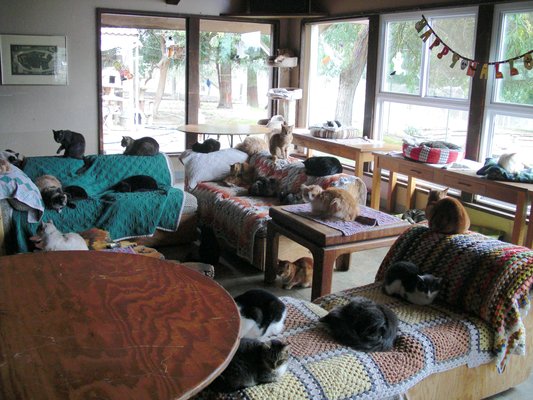Cats are known for their curiosity—especially their desire to know what their people are up to at all times. They also love to be the center of attention.
I know that whenever I sit down to focus on something, I immediately have at least one of my three cats climbing into my lap, wanting to know what I’m up to and why it’s more important than petting or playing with them. As a newbie to mindfulness meditation, it’s certainly made getting into the flow of things a challenge at times.
At first, I tried just ignoring them, but if you have cats, you know what an impossible task that is. Instead, I’ve been learning how to incorporate my feline interruptions into my meditation practice—and we’re all happier for it.
The following meditation is for fellow mindfulness newbies with curious cat visitors who want to join in meditation sessions. This has (usually) worked for me.
Hopefully it will work for others as well:
1. Find a comfortable chair.
If they are all already claimed by feline family members, remove the cat least likely to be a grump about it and steal their chair.
If they’re all stubborn, find an uncomfortable chair or a spot on the floor.
2. If you usually meditate with music and you forgot to turn it on before sitting down, it’s too late—there’s already at least one cat in your lap.
Don’t worry, you’ll be fine.
3. Close your eyes.
Breathe in, breathe out.
Don’t try to move away from your cat’s tuna breath as he sniffs your face. Experience it, accept it and then set it aside.
4. Observe your breathing.
Feel the air as it comes in through your nose and travels into your lungs. Your abdomen and chest expand, then contract as you breathe out.
If you become distracted by your cat turning circles in your lap, kneading your thigh or cleaning himself, simply bring your mind back to your breath.
5. If your cat begins to tap at your hand, it is best to begin petting him.
Turn it into part of your meditation practice. One stroke along his back as you breathe in, the next as you breathe out. Allow the movements to become automatic.
Notice the texture of his fur and his warmth on your lap. Then bring your mind back to your breath.
6. When it is time to return to the present, accept that the cat in your lap has no intention of moving for at least the next ten minutes.
Welcome the extra meditation time.
Close your eyes.
Breathe in, breathe out. Focus on your breath and the cat’s purr.
Note: While experiencing sensations is an important part of mindfulness, if your meditation buddy becomes over-excited or another cat comes to annoy him, you may want to end this session and return to it later.
If you are too late, wrap a clean washcloth around your scratches and consider the commonality of suffering.
Relephant:
How Pets Make Great Mindfulness Guides.
On Mindfulness & Dogfulness.
Author: Kyla Cathey
Assistant Editor: Hilda Carroll; Editor: Emily Bartran
Photo: Wikimedia












Read 0 comments and reply